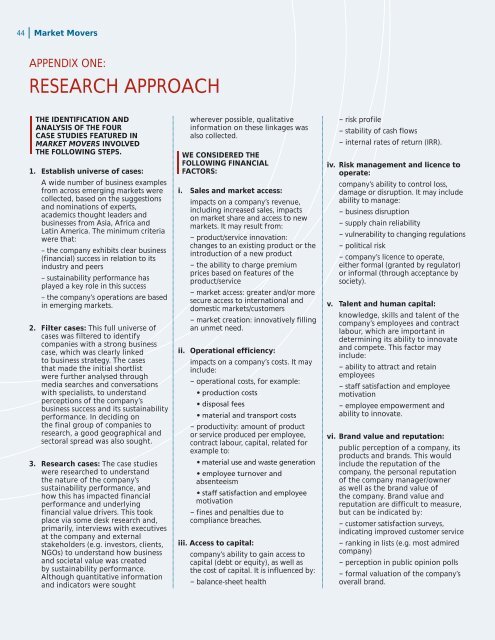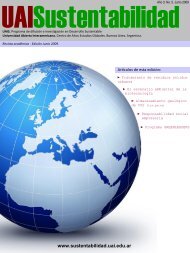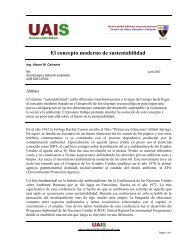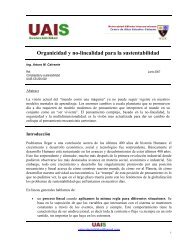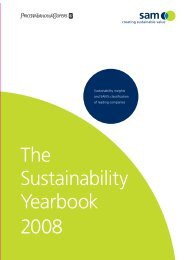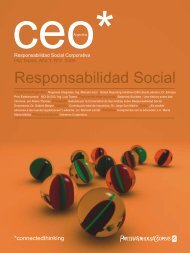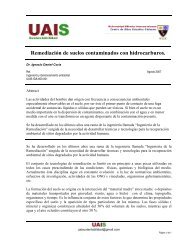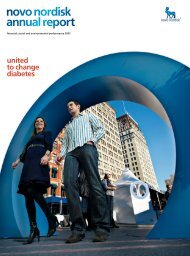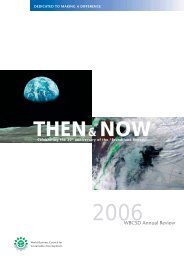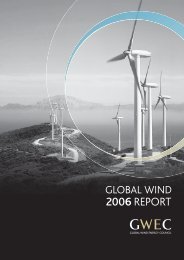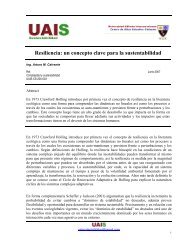Market Movers: Lessons from a Frontier of Innovation - IFC
Market Movers: Lessons from a Frontier of Innovation - IFC
Market Movers: Lessons from a Frontier of Innovation - IFC
You also want an ePaper? Increase the reach of your titles
YUMPU automatically turns print PDFs into web optimized ePapers that Google loves.
44<strong>Market</strong> <strong>Movers</strong>Appendix one:reseArch ApproAchThe idenTificaTion andanalysis <strong>of</strong> The foURcase sTUdies feaTURed in<strong>Market</strong> <strong>Movers</strong> involvedThe following sTeps.1. establish universe <strong>of</strong> cases:A wide number <strong>of</strong> business examples<strong>from</strong> across emerging markets werecollected, based on the suggestionsand nominations <strong>of</strong> experts,academics thought leaders andbusinesses <strong>from</strong> Asia, Africa andLatin America. The minimum criteriawere that:– the company exhibits clear business(financial) success in relation to itsindustry and peers– sustainability performance hasplayed a key role in this success– the company’s operations are basedin emerging markets.2. filter cases: This full universe <strong>of</strong>cases was filtered to identifycompanies with a strong businesscase, which was clearly linkedto business strategy. The casesthat made the initial shortlistwere further analysed throughmedia searches and conversationswith specialists, to understandperceptions <strong>of</strong> the company’sbusiness success and its sustainabilityperformance. In deciding onthe final group <strong>of</strong> companies toresearch, a good geographical andsectoral spread was also sought.3. Research cases: The case studieswere researched to understandthe nature <strong>of</strong> the company’ssustainability performance, andhow this has impacted financialperformance and underlyingfinancial value drivers. This tookplace via some desk research and,primarily, interviews with executivesat the company and externalstakeholders (e.g. investors, clients,NGOs) to understand how businessand societal value was createdby sustainability performance.Although quantitative informationand indicators were soughtwherever possible, qualitativeinformation on these linkages wasalso collected.we consideRed Thefollowing financialfacToRs:i. sales and market access:impacts on a company’s revenue,including increased sales, impactson market share and access to newmarkets. It may result <strong>from</strong>:− product/service innovation:changes to an existing product or theintroduction <strong>of</strong> a new product− the ability to charge premiumprices based on features <strong>of</strong> theproduct/service− market access: greater and/or moresecure access to international anddomestic markets/customers− market creation: innovatively fillingan unmet need.ii. operational efficiency:impacts on a company’s costs. It mayinclude:− operational costs, for example:• production costs• disposal fees• material and transport costs− productivity: amount <strong>of</strong> productor service produced per employee,contract labour, capital, related forexample to:• material use and waste generation• employee turnover andabsenteeism• staff satisfaction and employeemotivation− fines and penalties due tocompliance breaches.iii. access to capital:company’s ability to gain access tocapital (debt or equity), as well asthe cost <strong>of</strong> capital. It is influenced by:− balance-sheet health− risk pr<strong>of</strong>ile− stability <strong>of</strong> cash flows− internal rates <strong>of</strong> return (IRR).iv. Risk management and licence tooperate:company’s ability to control loss,damage or disruption. It may includeability to manage:− business disruption− supply chain reliability− vulnerability to changing regulations− political risk− company’s licence to operate,either formal (granted by regulator)or informal (through acceptance bysociety).v. Talent and human capital:knowledge, skills and talent <strong>of</strong> thecompany’s employees and contractlabour, which are important indetermining its ability to innovateand compete. This factor mayinclude:− ability to attract and retainemployees− staff satisfaction and employeemotivation− employee empowerment andability to innovate.vi. Brand value and reputation:public perception <strong>of</strong> a company, itsproducts and brands. This wouldinclude the reputation <strong>of</strong> thecompany, the personal reputation<strong>of</strong> the company manager/owneras well as the brand value <strong>of</strong>the company. Brand value andreputation are difficult to measure,but can be indicated by:− customer satisfaction surveys,indicating improved customer service− ranking in lists (e.g. most admiredcompany)− perception in public opinion polls− formal valuation <strong>of</strong> the company’soverall brand.


